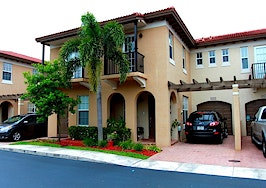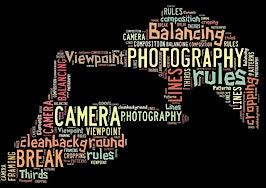This summer, many of my colleagues, friends and even family members had either purchased a home or were actively searching for one. I decided to seize the moment and take this opportunity to document real, critical consumer feedback.
The foundation of the “visual Web” and real estate marketing has always been photography. I wanted to learn how consumers interact with real estate photography, so I developed a research project. The results of my study were quite interesting.
Before I started my research, I needed a baseline. I decided to take some time and examine the quality of photography in the real estate space.
As you can imagine, the quality of photography was inconsistent and, at times, pretty funny. I viewed dozens and dozens of photographs that had everything from Realtors reflecting in bathroom mirrors to oversaturated fake grass composited in Photoshop. Check out the Facebook page Bad MLS Photos to see what I mean.
To find out how consumers interact with real estate photography, I decided to start my research by conducting qualitative research. I conducted in-person and online interviews.
I asked each participant 10 questions. The questions addressed the home search process and how they interacted with photography. I recorded the in-person interviews and transcribed the data. My research data was entered into a spreadsheet and analyzed.
Qualitative versus quantitative
Let’s take a moment to clarify the difference between qualitative and quantitative research. Quantitative research is typically facilitated via statistical, mathematical or computational techniques. Unlike quantitative research, qualitative research is more intimate and is typically conducted in an interview setting. You can learn more about both approaches here.
Let’s take a look at my findings
- Consumers start the home search online, or more specifically, on Google. They search for homes in a specific location, for example, “homes for sale in Providence, RI.”
- Consumers utilize media company websites such as Zillow and Trulia, particularly tools that include school information and market reports. Interestingly, after visiting these websites, the participants that I interviewed circled back to a local broker’s website to make contact.
- The participants that I interviewed generally had a favorable impression of searching for a home online. However, photography was wildly inconsistent.
- Every participant agreed that photography was critical in the home search process. In fact, if they did not like a photograph, they would move on to the next listing.
- Amateur photography made the home look inconsistent when viewing it in person. Professional photography gave a better sense of the home and appeared more accurately in-person.
- Consumers want more photographs in photo galleries, and larger photographs were preferred in all instances. In many cases, participants indicated that they viewed all of the photos available.
- What I found super-intriguing was that the sequential order of the photography made a difference. The participants I interviewed wanted to see the photos flow in an order emulating how they would naturally walk through a home. They wanted the first photo to be of the exterior, capturing the entire property, and then see photos that take them through the home. The last photo should be an exterior shot of the rear of the house.
While I was conducting my qualitative research and interviewing consumers, my colleague Ido Zucker, partner at booj (formerly Active Website), was conducting a usability test for me that tackled the quantitative aspect of my research. The usability study was conducted utilizing Tobii eye tracking technology. The Tobii computer is a super-cool, state-of-the-art eye-tracking platform used in a variety of research fields. I’d like to share the results of this data with you as well.
Usability study
Here’s a search results page from Hawaii-based brokerage Kahala Associates.
[Click fullscreen to enlarge]
Here’s another example. This time the homes represent a more rustic style. The page layout is the same.
[Click fullscreen to enlarge]
As I reported in my qualitative research, consumers want to see big, beautiful photography. Here’s another example from the usability study. This photograph is from an image gallery. It’s a nice picture.
[Click to enlarge]
However, the participants preferred this image.
[Click to enlarge]
So, how did I apply the data that I collected during my research? Here’s an example of a property (with notes) utilizing the feedback from my research project.
[Click to enlarge]
To recap my findings:
- Consumers start the home search online, or more specifically, on Google.
- Consumers utilize websites such Zillow and Trulia but circle back to a broker’s website to make contact.
- Photography is critical. Consumers want large, professionally shot photographs.
- Sequential order of the photos matters.
Please contact me if you have any questions or want to discuss my research in greater detail.
Tom Flanagan is the director of information technology at Residential Properties Ltd. in Providence, R.I. You can contact him at tflanagan@residentialproperties.com or @tflan on Twitter.









